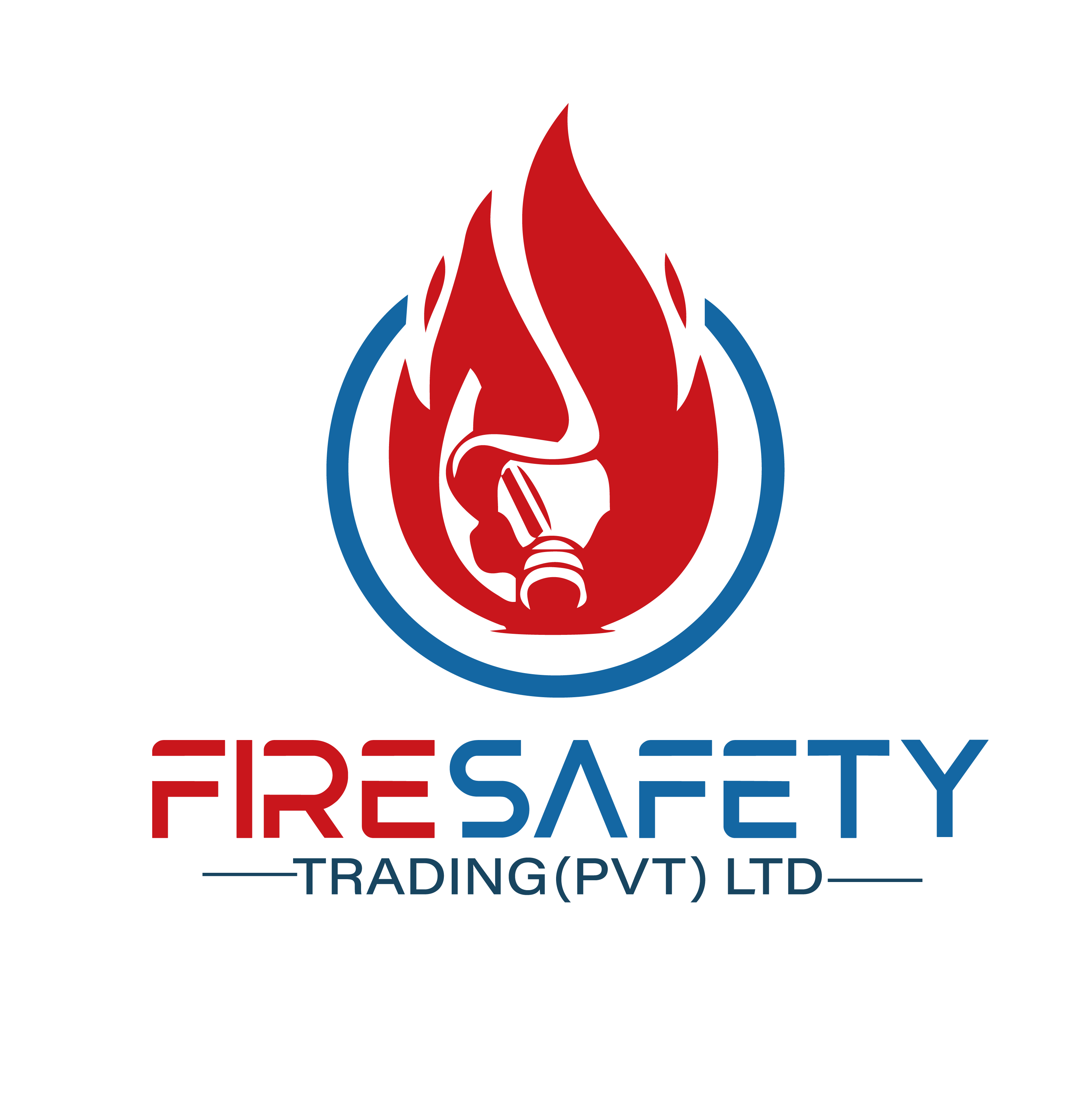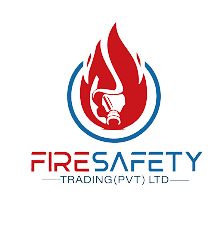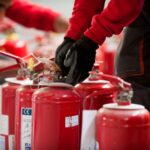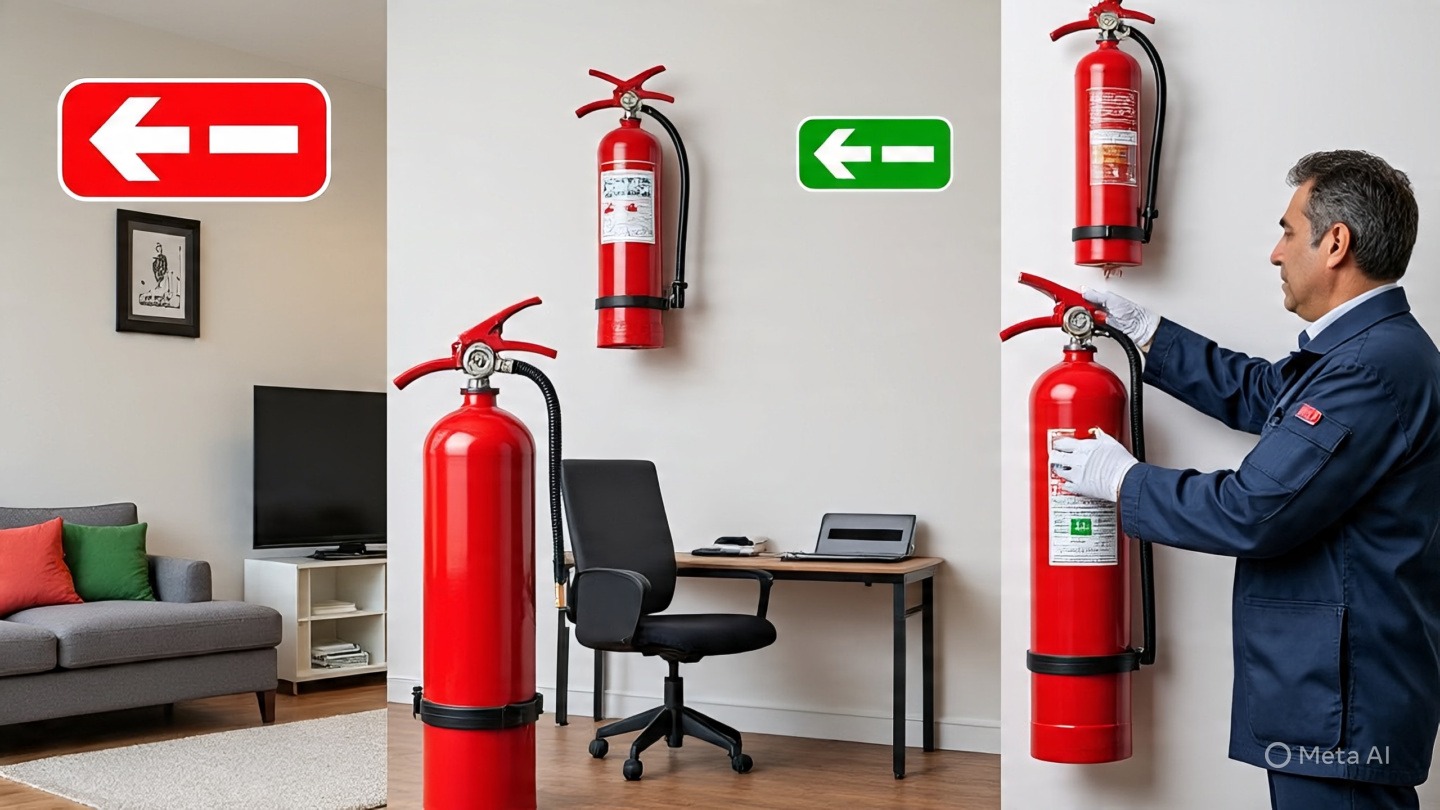Rawalpindi, one of Pakistan’s most vibrant and densely populated cities, is a hub of residential, commercial, and industrial activity. With its proximity to the capital Islamabad and its role as a major transportation and military center, Rawalpindi has seen rapid urbanization over the past few decades. This growth, while economically beneficial, has also introduced a host of safety challenges among them, the persistent threat of fire hazards.
Fire safety is often overlooked in developing urban environments, and Rawalpindi is no exception. Despite the increasing number of high-rise buildings, shopping malls, schools, hospitals, and industrial zones, many structures lack even the most basic fire protection systems. The consequences of such negligence can be devastating, leading to loss of life, property damage, and long-term economic setbacks.
This article aims to provide a comprehensive overview of fire safety equipment in Rawalpindi. It will explore the types of equipment available, the suppliers and distributors operating in the city, the regulatory framework governing fire safety, and the challenges faced in implementing effective fire prevention strategies. Whether you are a homeowner, business owner, policymaker, or concerned citizen, understanding the landscape of fire safety in Rawalpindi is essential for building a safer future.
The Importance of Fire Safety in Urban Pakistan
Fire safety is not merely a technical issue; it is a matter of public health, urban planning, and civic responsibility. In cities like Rawalpindi, where population density is high and infrastructure is often outdated, the risk of fire-related incidents is significantly elevated. The lack of awareness, insufficient regulation, and limited access to modern fire safety equipment contribute to a dangerous environment where even a small spark can lead to a major disaster.
Economic Impact
Fires can cause millions of rupees in damages, affecting homes, businesses, and public institutions. The economic toll includes not only the cost of rebuilding but also the loss of productivity, disruption of services, and increased insurance premiums. In industrial zones, fires can halt production for weeks, affecting supply chains and employment.
Human Cost
The most tragic consequence of fire incidents is the loss of human life. In many cases, fatalities occur not because the fire was particularly severe, but because there were no alarms, extinguishers, or escape routes available. Children, elderly individuals, and people with disabilities are especially vulnerable in such situations.
Legal and Regulatory Pressure
As awareness grows, so does the pressure on building owners and developers to comply with fire safety regulations. Non-compliance can lead to fines, legal action, and even the closure of facilities. However, enforcement remains inconsistent, and many buildings continue to operate without adequate safety measures.
Common Causes of Fire Incidents in Rawalpindi
Understanding the root causes of fire incidents is crucial for developing effective prevention strategies. In Rawalpindi, several factors contribute to the frequency and severity of fires:
1. Electrical Short Circuits
One of the most common causes of fires in urban Pakistan is electrical malfunction. Many buildings in Rawalpindi still rely on outdated wiring systems that are not equipped to handle modern electrical loads. Overloaded circuits, poor insulation, and lack of grounding can lead to sparks and fires, especially during peak usage hours.
2. Gas Leaks
Natural gas is widely used for cooking and heating in Rawalpindi. However, poor maintenance of gas lines, faulty appliances, and negligence in turning off valves can result in leaks. When gas accumulates in enclosed spaces, even a small flame or spark can trigger a massive explosion.
3. Industrial Hazards
Rawalpindi’s industrial zones, such as those in Chaklala and Westridge, house factories that deal with flammable materials, chemicals, and heavy machinery. Improper storage, lack of ventilation, and absence of fire suppression systems make these areas particularly vulnerable to fire outbreaks.
4. Kitchen Fires
In residential areas, kitchen fires are a frequent occurrence. These are often caused by unattended cooking, overheating of oil, or malfunctioning stoves. In apartment complexes, a single kitchen fire can quickly spread to neighboring units if not contained.
5. Arson and Vandalism
While less common, deliberate acts of arson do occur, especially in politically charged environments or during civil unrest. Vandalism involving firecrackers or incendiary devices can also lead to unintended fires.
6. Lack of Fire Exits and Evacuation Plans
Many buildings in Rawalpindi are constructed without proper fire exits or evacuation routes. In the event of a fire, occupants may find themselves trapped, leading to panic and injury. Stairwells are often blocked, elevators are used improperly, and emergency lighting is absent.
Types of Fire Safety Equipment in Rawalpindi
Fire safety equipment is the backbone of any fire prevention and response strategy. In Rawalpindi, the availability and use of such equipment vary widely depending on the type of building, its purpose, and the awareness level of its occupants. This section explores the most commonly used fire safety tools, their functions, and how they are deployed across residential, commercial, and industrial settings.
1. Fire Extinguishers
Fire extinguishers are the most recognizable and widely used fire safety devices. They are designed to combat small fires before they escalate. In Rawalpindi, you’ll find various types of extinguishers, each suited to different fire classes:
a. Water-Based Extinguishers
These are ideal for Class A fires involving solid combustibles like wood, paper, and cloth. Commonly found in schools, offices, and homes, they are simple to use but ineffective against electrical or oil fires.
b. Foam Extinguishers
Foam extinguishers are used for Class B fires involving flammable liquids such as petrol, diesel, and paint. They work by forming a blanket over the liquid surface, cutting off oxygen and suppressing vapors.
c. Carbon Dioxide (CO₂) Extinguishers
These are essential for electrical fires. CO₂ extinguishers are commonly installed in server rooms, offices, and commercial buildings. They leave no residue, making them safe for sensitive equipment.
d. Dry Powder Extinguishers
Versatile and effective against Class A, B, and C fires, dry powder extinguishers are often used in industrial zones and workshops. However, they can reduce visibility and leave a mess, which makes them less ideal for indoor use.
e. Wet Chemical Extinguishers
Specialized for kitchen fires involving cooking oils and fats (Class K), these extinguishers are increasingly being installed in restaurants and commercial kitchens in Rawalpindi.
Local Insight: Many buildings in Rawalpindi still rely on outdated or expired extinguishers. Regular inspection and refilling are crucial, yet often neglected.
2. Fire Alarm Systems
Fire alarms are critical for early detection and evacuation. A well-designed alarm system can save lives by alerting occupants before a fire spreads. In Rawalpindi, fire alarm systems range from basic smoke detectors to integrated smart systems.
a. Smoke Detectors
These devices sense smoke particles and trigger alarms. They are inexpensive and easy to install, making them suitable for homes and small offices.
b. Heat Detectors
Used in environments where smoke may be present due to normal operations (e.g., kitchens or factories), heat detectors activate when temperatures rise beyond a set threshold.
c. Manual Call Points
Also known as break-glass units, these allow individuals to manually trigger the alarm in case of fire. They are typically installed near exits and stairwells.
d. Sirens and Strobes
Once activated, alarms emit loud sounds and flashing lights to alert occupants. In noisy environments like factories, strobes are essential for visual signaling.
Rawalpindi Reality: Many residential buildings lack even basic smoke detectors. Commercial buildings often install alarms to meet legal requirements but fail to maintain them.
3. Sprinkler Systems
Automatic sprinkler systems are among the most effective tools for controlling fires in large buildings. They activate when heat reaches a certain level, releasing water to suppress flames.
a. Wet Pipe Systems
These are the most common type, with water constantly in the pipes. They are reliable and quick to respond.
b. Dry Pipe Systems
Used in areas prone to freezing, these systems contain pressurized air that is released before water flows.
c. Deluge Systems
Designed for high-hazard areas, deluge systems release large volumes of water simultaneously. They are used in chemical plants and industrial zones.
d. Pre-Action Systems
These systems require two triggers heat and smoke before activation, reducing the risk of accidental discharge.
Local Challenge: Sprinkler systems are rare in Rawalpindi’s residential sector due to cost and lack of awareness. High-rise buildings and malls are more likely to have them, but maintenance is inconsistent.
4. Fire Blankets
Fire blankets are made of fire-resistant materials and are used to smother small fires, especially in kitchens. They are also useful for wrapping around a person whose clothing has caught fire.
Usage Tips:
- Pull the tabs to release the blanket.
- Cover the fire completely to cut off oxygen.
- Leave in place until the fire is extinguished.
Rawalpindi Context: Fire blankets are underutilized. Few households or restaurants keep them on hand, despite their affordability and effectiveness.
5. Emergency Exit Signs and Lighting
During a fire, visibility can be compromised due to smoke and power outages. Emergency lighting and exit signs guide occupants to safety.
a. Illuminated Exit Signs
These signs are powered by backup batteries and remain lit during emergencies. They are mandatory in commercial buildings but often missing in smaller establishments.
b. Emergency Lighting
Installed in corridors, stairwells, and exits, these lights activate automatically during power failure.
Rawalpindi Reality: Many buildings lack proper signage. In some cases, exit doors are locked or blocked, rendering signs useless.
6. Fire Hose Reels and Hydrants
For larger fires, hose reels and hydrants provide a continuous water supply. These are typically installed in commercial and industrial buildings.
a. Hose Reels
Connected to the building’s water supply, hose reels allow trained personnel to fight fires before firefighters arrive.
b. Fire Hydrants
External hydrants provide access to municipal water for firefighting vehicles. Their placement and maintenance are critical.
Local Insight: Hydrant systems in Rawalpindi are often poorly maintained. Some are blocked by parked vehicles or construction debris.
7. Fire Suppression Systems
Advanced suppression systems use gases or chemicals to extinguish fires without water. These are used in data centers, museums, and high-value storage areas.
a. FM-200 Systems
These release a clean agent gas that suppresses fire without damaging equipment.
b. Inert Gas Systems
Use gases like nitrogen or argon to reduce oxygen levels and extinguish flames.
c. Kitchen Hood Suppression
Automatically activates when fire is detected under commercial kitchen hoods.
Rawalpindi Status: These systems are rare and expensive. Only high-end facilities and multinational offices tend to install them.
8. Personal Protective Equipment (PPE)
Firefighters and trained personnel require PPE to safely combat fires. This includes:
- Fire-resistant suits
- Helmets with visors
- Gloves and boots
- Breathing apparatus
Local Challenge: Rawalpindi’s fire department is often underfunded, with limited access to modern PPE. Private security firms may offer better-equipped teams for commercial clients.
9. Fire Safety Kits
Compact kits for homes and vehicles typically include:
- Mini fire extinguisher
- Fire blanket
- Smoke detector
- Emergency whistle
- First aid supplies
Rawalpindi Opportunity: These kits are available but not widely promoted. Retailers and safety advocates could boost adoption through awareness campaigns.
10. Smart Fire Safety Devices
With the rise of smart homes and IoT, fire safety is becoming more intelligent:
- Wi-Fi smoke detectors
- Mobile alert systems
- Remote sprinkler activation
- Integration with home automation platforms
Local Trend: Uptake is slow but growing. Developers in Bahria Town and DHA Rawalpindi are beginning to include smart safety features in new constructions.
Key Suppliers and Distributors in Rawalpindi
Rawalpindi’s growing awareness of fire safety has led to the emergence of several suppliers and distributors offering a wide range of fire protection products. These companies cater to residential, commercial, and industrial clients, providing not only equipment but also installation, maintenance, and training services.
1. Universal Fire Protection (PVT) Ltd
Located in Rehmanabad, Universal Fire Protection is one of the most prominent names in the region. They offer a comprehensive range of fire extinguishers, alarm systems, hydrants, and suppression systems. Their clientele includes hospitals, schools, factories, and government buildings. The company also provides fire safety audits and training sessions for staff.
2. Concorde Trading Co
Situated on Murree Road, Concorde Trading Co specializes in firefighting gear, including PPE for firefighters, hose reels, and fire-resistant doors. They are known for importing high-quality equipment from Europe and the Middle East, ensuring compliance with international standards.
3. CTI System & Solutions
This Saddar-based company focuses on integrated fire and security systems. Their offerings include smart smoke detectors, CCTV-linked fire alarms, and automated sprinkler systems. CTI is popular among high-rise developers and commercial complexes in Bahria Town and DHA.
4. Minhas Safety Concerns
Minhas Safety Concerns is a local distributor that caters to small businesses and residential clients. They offer affordable fire extinguishers, blankets, and basic alarm systems. Their mobile refilling service is especially useful for clients who cannot transport heavy equipment.
5. Creative Home Automation
Located in Shamsabad, this company blends fire safety with smart home technology. Their systems allow users to monitor smoke detectors and alarms via mobile apps. They also offer integration with voice assistants and home security platforms.
6. Fire Safety Trading
This vendor focuses on maintenance and refilling services. They provide doorstep inspections, pressure testing, and certification for extinguishers. Their technicians are trained to handle both domestic and industrial-grade equipment.
7. Online Retailers
Platforms like Daraz.pk and OLX Pakistan have made fire safety equipment more accessible. Homeowners can now purchase smoke detectors, mini extinguishers, and fire blankets online, often with free delivery in Rawalpindi.
Challenges in the Market Despite the availability of suppliers, several challenges persist:
- Lack of regulation: Not all vendors follow safety standards.
- Counterfeit products: Some low-cost extinguishers are ineffective or expired.
- Limited awareness: Many customers don’t know what equipment they need.
Opportunities for Growth
- Training partnerships: Suppliers can collaborate with schools and offices to offer fire safety workshops.
- Government contracts: Public sector buildings need upgrades, presenting a business opportunity.
- Mobile services: On-site inspections and refills are in high demand.
Fire Safety Regulations and Compliance
Fire safety regulations in Pakistan are governed by a mix of national building codes, provincial laws, and municipal bylaws. In Rawalpindi, enforcement falls under the jurisdiction of the Rawalpindi Development Authority (RDA), Civil Defence Department, and local fire brigades.
National Building Code of Pakistan (NBCP)
The NBCP outlines mandatory fire safety provisions for different types of buildings. Key requirements include:
- Installation of fire extinguishers on every floor
- Emergency exits and stairwells
- Fire-resistant construction materials
- Smoke detectors and alarm systems
- Sprinkler systems in high-rise buildings
While the code is comprehensive, its implementation is inconsistent. Many buildings are approved without proper inspections, and retrofitting older structures is rarely enforced.
Punjab Fire Safety Act
This provincial law mandates fire safety compliance for commercial and industrial buildings. It includes provisions for:
- Annual fire safety audits
- Staff training in fire response
- Maintenance of equipment
- Penalties for non-compliance
However, enforcement is weak due to limited manpower and budget constraints.
Civil Defence Guidelines
The Civil Defence Department conducts inspections and issues fire safety certificates. Their guidelines include:
- Proper signage and evacuation plans
- Accessible fire extinguishers
- Functional alarm systems
- Fire drills and training
Certificates are often required for insurance and licensing, but many businesses bypass the process or obtain them through informal channels.
Fire Brigade Oversight
Rawalpindi’s fire brigade plays a role in inspecting buildings and responding to emergencies. However, they are often under-resourced and lack modern equipment. Coordination between the brigade and regulatory bodies is limited, leading to gaps in enforcement.
Compliance Challenges
- Corruption and loopholes: Some developers avoid compliance through bribes or political connections.
- Lack of awareness: Many building owners are unaware of legal requirements.
- Resource constraints: Regulatory bodies lack staff and equipment to conduct thorough inspections.
Recommendations
- Digital tracking: Create an online registry of certified buildings and inspection schedules.
- Public reporting: Allow citizens to report non-compliant buildings anonymously.
- Incentives: Offer tax breaks or subsidies for compliant buildings.
- Training for inspectors: Improve the capacity of regulatory staff through workshops and certifications.
Maintenance and Refilling Services
Estimated word count: ~600 words
Installing fire safety equipment is only the first step. Regular maintenance ensures that the tools will function during an emergency. In Rawalpindi, maintenance and refilling services are offered by a mix of private vendors and government departments.
Fire Extinguisher Refilling
Extinguishers lose pressure over time or expire after use. Refilling involves:
- Pressure testing
- Replacing seals and valves
- Refilling with appropriate extinguishing agent
- Certification and labeling
Most vendors recommend refilling every 6–12 months, depending on usage and type.
Alarm System Testing
Smoke detectors and alarms must be tested monthly. Maintenance includes:
- Battery replacement
- Sensor calibration
- Software updates (for smart systems)
- Cleaning to remove dust and debris
Sprinkler System Inspection
Sprinklers require:
- Valve checks
- Pipe integrity testing
- Flow rate measurement
- Replacement of corroded parts
Emergency Lighting and Signage
Backup batteries should be tested quarterly. Signs must be visible and unobstructed. Maintenance includes:
- Battery replacement
- Bulb checks
- Cleaning and repositioning
Service Providers
- Fire Safety Trading: Offers mobile refilling and inspection services.
- Universal Fire Protection: Provides annual maintenance contracts.
- CTI Systems: Specializes in smart system diagnostics.
- Civil Defence Department: Conducts inspections for certification.
Common Issues
- Neglect: Equipment is installed but never maintained.
- Fake refills: Some vendors use substandard agents.
- No documentation: Lack of maintenance logs makes audits difficult.
Best Practices
- Maintain a fire safety logbook
- Schedule quarterly inspections
- Train staff to perform basic checks
- Use certified vendors only
Public Awareness and Education
Public awareness is the cornerstone of effective fire safety. Even the most advanced equipment is useless if people don’t know how to use it or respond appropriately during emergencies. In Rawalpindi, fire safety education is still in its infancy, with limited outreach and engagement across communities.
1. Awareness in Residential Areas
Most households in Rawalpindi lack basic fire safety knowledge. Few residents know how to operate a fire extinguisher, identify fire hazards, or create evacuation plans. In densely populated neighborhoods like Satellite Town, Committee Chowk, and Dhoke Khabba, the risk is compounded by narrow streets, shared utilities, and aging infrastructure.
2. Schools and Educational Institutions
While some private schools conduct fire drills and safety workshops, many public schools do not. Teachers and students are often unaware of emergency protocols. The absence of fire alarms, extinguishers, and exit signage in school buildings poses a serious threat to student safety.
3. Commercial and Industrial Awareness
Businesses are more likely to invest in fire safety due to regulatory pressure. However, training is often limited to a few staff members. In industrial zones, workers may be exposed to flammable materials without proper protective gear or training in fire response.
4. Role of Media and NGOs
Local media occasionally reports on fire incidents but rarely runs educational campaigns. NGOs like Rescue 1122 and the Civil Defence Department have conducted workshops, but these efforts are sporadic and underfunded.
5. Community Engagement
There is a need for community-based fire safety programs. Mosques, community centers, and union councils could serve as platforms for training sessions, awareness drives, and distribution of safety materials.
Key Recommendations:
- Introduce fire safety modules in school curricula.
- Launch city-wide awareness campaigns using radio, TV, and social media.
- Encourage neighborhood fire safety committees.
- Partner with local influencers to promote safety messages.
Challenges in Implementation
Despite growing awareness and availability of equipment, Rawalpindi faces several challenges in implementing effective fire safety measures.
1. Financial Constraints
Many homeowners and small businesses cannot afford fire safety equipment. Extinguishers, alarms, and sprinkler systems are seen as luxury items rather than necessities. Without subsidies or incentives, adoption remains low.
2. Regulatory Gaps
While laws exist, enforcement is weak. Building inspections are infrequent, and penalties for non-compliance are minimal. Corruption and bureaucratic delays further undermine the system.
3. Infrastructure Limitations
Older buildings in Rawalpindi were constructed without fire safety in mind. Retrofitting them with alarms, sprinklers, and exits is expensive and technically challenging. Narrow streets and congested layouts also hinder evacuation and firefighting efforts.
4. Lack of Training
Even when equipment is installed, users are often untrained. Staff may panic during emergencies or misuse extinguishers. Fire drills are rare, and safety protocols are poorly communicated.
5. Maintenance Neglect
Equipment is frequently installed to meet legal requirements but never maintained. Extinguishers go unrefilled, alarms stop working, and exit signs fade or fall off. Without regular inspections, these tools become symbolic rather than functional.
6. Emergency Response Limitations
Rawalpindi’s fire brigade is under-resourced. Response times can be slow due to traffic congestion, outdated vehicles, and limited manpower. Coordination between emergency services is also lacking.
Case Example: In 2023, a fire broke out in a commercial plaza near Saddar. Despite having extinguishers and alarms, the staff failed to respond effectively. The fire brigade arrived late due to blocked roads, and the building suffered extensive damage. This incident highlights the gap between equipment availability and operational readiness.
Recommendations for Improvement
To build a fire-safe Rawalpindi, a multi-pronged strategy is needed. Here are actionable recommendations for government bodies, businesses, and citizens:
1. Strengthen Regulations
- Enforce mandatory fire safety audits for all commercial and public buildings.
- Increase penalties for non-compliance.
- Digitize inspection records to improve transparency.
2. Financial Incentives
- Offer subsidies or tax breaks for installing fire safety equipment.
- Provide low-interest loans for retrofitting older buildings.
- Encourage insurance companies to reward compliant properties.
3. Public Education
- Launch awareness campaigns in Urdu and Punjabi for broader reach.
- Distribute fire safety kits during community events.
- Create instructional videos and infographics for social media.
4. Training and Certification
- Mandate fire safety training for school staff, factory workers, and office employees.
- Partner with NGOs and private firms to offer certification programs.
- Include fire safety in vocational training curricula.
5. Infrastructure Upgrades
- Retrofit older buildings with basic safety features.
- Ensure all new constructions meet NBCP standards.
- Improve road access for emergency vehicles.
6. Emergency Services Support
- Invest in modern firefighting equipment and vehicles.
- Expand fire brigade staffing and training.
- Establish satellite fire stations in high-risk zones.
7. Community Engagement
- Form neighborhood safety committees.
- Conduct regular fire drills in residential blocks.
- Encourage citizen reporting of fire hazards.
Vision for the Future: With coordinated efforts, Rawalpindi can transform from a reactive to a proactive city in fire safety. The goal is not just to reduce fire incidents but to build a culture of preparedness, responsibility, and resilience.
Future Outlook
As Rawalpindi continues to urbanize and modernize, the future of fire safety in the city hinges on innovation, policy reform, and cultural change. The next decade presents both challenges and opportunities for transforming how fire risks are managed.
1. Smart Fire Safety Systems
The integration of Internet of Things (IoT) technologies into fire safety is gaining traction. Smart smoke detectors, mobile alert systems, and automated sprinkler controls are already being adopted in upscale developments like Bahria Town and DHA. These systems offer real-time monitoring, remote access, and predictive analytics allowing for faster response and better prevention.
2. AI and Data-Driven Risk Management
Artificial intelligence can help identify high-risk zones by analyzing historical fire data, building materials, and population density. Municipal authorities could use these insights to prioritize inspections, allocate resources, and design safer infrastructure.
3. Public-Private Partnerships
Collaboration between government agencies, private companies, and NGOs will be essential. Joint ventures could fund training programs, subsidize equipment for low-income communities, and develop fire safety curricula for schools and vocational institutes.
4. Climate Change and Urban Density
Rising temperatures and erratic weather patterns increase the risk of fires, especially in densely packed urban areas. Future planning must account for these environmental factors by enforcing stricter building codes and promoting fire-resistant materials.
5. Youth Engagement and Education
Empowering the next generation with fire safety knowledge is key. Schools, universities, and youth organizations can play a pivotal role in shaping a culture of preparedness. Gamified learning apps, competitions, and volunteer programs could make fire safety education more engaging.
Vision Statement: A fire-safe Rawalpindi is not just a technical goal it’s a civic aspiration. With the right investments, policies, and public engagement, the city can become a model of resilience and safety for all of Pakistan.
Conclusion
Fire safety in Rawalpindi is a multifaceted issue that touches every aspect of urban life from residential homes and commercial centers to schools, hospitals, and industrial zones. While the city has made strides in equipment availability and regulatory frameworks, significant gaps remain in awareness, enforcement, and maintenance.
This comprehensive guide has explored the types of fire safety equipment available in Rawalpindi, the key suppliers and distributors, the regulatory landscape, and the challenges faced in implementation. It has also offered actionable recommendations for improving fire safety through education, infrastructure upgrades, and policy reform.
The path forward requires a collective effort. Government bodies must enforce regulations and invest in emergency services. Businesses must prioritize safety over short-term cost savings. Citizens must educate themselves and demand safer environments. And educators, media outlets, and community leaders must champion the cause of fire prevention.
Rawalpindi stands at a crossroads. With rapid urban growth comes increased risk but also the opportunity to build smarter, safer, and more resilient communities. Fire safety is not a luxury; it is a necessity. It protects lives, preserves property, and ensures the continuity of progress.
Let this article serve not just as a resource, but as a call to action. Whether you’re a policymaker drafting new regulations, a homeowner installing your first smoke detector, or a student learning about fire hazards for the first time your role matters. Together, we can ignite a movement toward a fire-safe Rawalpindi.





